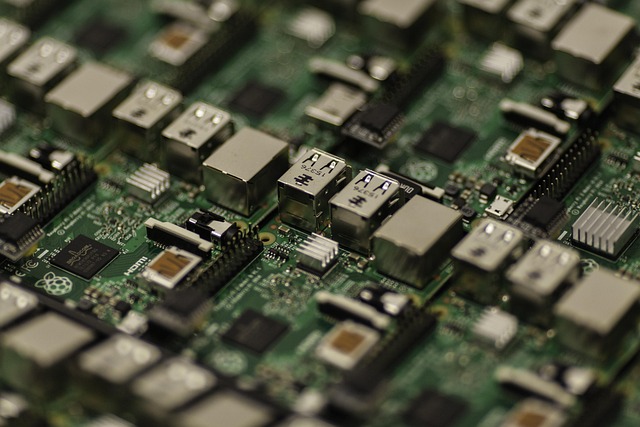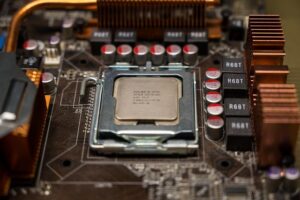OneWheel electric boards have transformed urban mobility with advanced safety features that prioritize rider experience and well-being in bustling environments. Key technologies include collision avoidance systems, stability control, built-in alarms, and GPS tracking. Sensor fusion and AI enable real-time obstacle detection, predictive braking, adaptive speed control, and enhanced stability during high-speed maneuvers. Emergency braking systems protect riders from potential collisions, especially in dense city areas. Future advancements are poised to bring even more sophisticated safety measures through evolving sensors, AI, ADAS, improved connectivity, and smart features, making OneWheel electric boards safer and more appealing to a global audience.
“Unveiling the advanced safety features that power the OneWheel electric board is essential as these innovative devices continue to redefine personal mobility. This article takes you on a journey through the evolving safety technology behind self-balancing vehicles, delving into critical components like sensor fusion and AI for real-time obstacle detection. From crash avoidance systems to stability control, we explore how these features ensure a secure ride. Additionally, we look towards the future, predicting advanced safety prospects for the next generation of OneWheel riders.”
Understanding Advanced Safety Features for OneWheel Electric Boards

Advanced Safety Features have become a game-changer in the world of OneWheel electric boards, enhancing rider experience and peace of mind. These innovative systems are designed to ensure optimal safety while navigating through bustling urban landscapes. By understanding these features, riders can fully embrace the freedom and excitement that OneWheel electric boards offer.
Key components include collision avoidance systems, which use sensors to detect potential obstacles, allowing for automatic braking or steering corrections. Additionally, stability control mechanisms help maintain balance during unpredictable maneuvers. Many models also feature built-in safety alarms and GPS tracking, providing crucial data in case of emergencies. These advanced technologies not only protect riders but also instill confidence, enabling them to explore new paths with ease.
The Evolution of Safety Technology in Self-Balancing Vehicles

The evolution of safety technology in self-balancing vehicles, such as the OneWheel electric board, has been a remarkable journey. Early models relied heavily on basic sensors and gyroscopes to maintain balance, leading to some initial safety concerns. However, with advancements in AI and computer vision, these vehicles have become increasingly stable and responsive. Today, advanced features like real-time obstacle detection, adaptive speed control, and automatic emergency braking are standard across many OneWheel models.
These innovations not only improve rider safety but also enhance the overall experience. For instance, obstacle detection allows the board to adjust its trajectory to avoid potential hazards, while adaptive speed control ensures a smooth ride even in dynamic environments. As technology continues to progress, we can expect even more sophisticated safety features, making self-balancing vehicles safer and more accessible for riders around the world.
Key Components: Sensor Fusion and AI for Real-Time Obstacle Detection

In the realm of advanced safety features for the OneWheel electric board, sensor fusion and artificial intelligence (AI) play a pivotal role in real-time obstacle detection. By seamlessly integrating various sensors such as LiDAR, cameras, and ultrasonic transducers, these cutting-edge technologies enable the board to perceive its surroundings accurately and instantaneously. Each sensor contributes unique data points that are then fused together using AI algorithms, creating a comprehensive 3D map of the environment. This fusion allows for precise obstacle detection, even in complex or cluttered scenarios, ensuring a safer riding experience.
The AI-driven system constantly analyzes the fused sensor data to identify potential hazards like obstacles, traffic signs, and other riders. It can predict and anticipate movements, enabling quick responses to unexpected situations. For instance, if an object suddenly appears in the path of the OneWheel electric board, the AI can calculate a safe course correction, avoiding collisions and enhancing rider safety. This real-time obstacle detection capability is pivotal for navigating bustling urban environments, where unpredictable events are common, ensuring riders stay protected while enjoying the freedom of their electric boards.
Crash Avoidance Systems: How They Work and Their Effectiveness

Crash avoidance systems on modern vehicles, including advanced features found in many OneWheel electric boards, utilize a combination of sensors and software to predict and prevent accidents. These systems often include adaptive cruise control (ACC), lane-keeping assist (LKA), and automatic emergency braking (AEB). ACC uses radar or cameras to maintain a safe following distance from the vehicle ahead, while LKA gently steers to keep the vehicle centered in its lane. AEB can detect potential collisions and apply the brakes to avoid or mitigate impact.
The effectiveness of these systems is well-documented. Studies show that crash avoidance technologies significantly reduce rear-end collisions, a common type of accident caused by human error. For instance, OneWheel electric boards equipped with advanced safety features have demonstrated substantial improvements in rider safety, offering peace of mind and enhanced protection during every ride.
Balancing Act: Stability Control and Adaptive Algorithms

The oneWheel electric board has transformed the way we think about personal transportation, offering unparalleled maneuverability and thrill-seeking potential. However, this innovative design presents a unique balancing act in terms of safety. Advanced stability control systems are pivotal in ensuring riders stay upright and secure during high-speed maneuvers. These intelligent algorithms continuously monitor wheel speed, tilt, and acceleration, making real-time adjustments to maintain balance.
By employing sophisticated sensor technology and machine learning, these adaptive algorithms can predict and correct instability before it becomes a safety concern. This dynamic equilibrium ensures that even inexperienced riders can navigate twists, turns, and unpredictable terrain with greater confidence. The result is an exhilarating yet safe experience, pushing the boundaries of what’s possible on a oneWheel while mitigating potential risks.
Emergency Braking: A Lifesaver in Unexpected Situations

Emergency Braking, a revolutionary safety feature on modern vehicles and increasingly on advanced transportation devices like the OneWheel electric board, acts as a lifesaver in unexpected situations. This technology employs sensors, cameras, and sophisticated algorithms to detect potential collisions and automatically apply brakes to mitigate or even prevent accidents. For instance, when an obstacle suddenly appears on the path of a OneWheel rider, emergency braking can instantly slow down or stop the board, significantly reducing the risk of crashes and severe injuries.
This feature is particularly crucial in urban environments with heavy traffic and narrow spaces, where sudden events like pedestrians stepping into the street or vehicles making abrupt turns can pose significant hazards. By continuously monitoring surroundings, OneWheel electric boards equipped with emergency braking systems offer riders a heightened sense of security, ensuring that even inexperienced users are protected from some of the most common causes of accidents.
Future Prospects: Advanced Safety Features for the Next Generation of OneWheel Riders

The future of advanced safety features for the OneWheel electric board looks promising, with technology rapidly evolving to cater to the needs of riders. As a result, the next generation of OneWheel riders can expect even more sophisticated and integrated safety mechanisms. These advancements will likely include improved sensors and AI capabilities to predict and avoid obstacles, enhancing overall stability and control. The integration of advanced driver-assistance systems (ADAS) could further revolutionize riding by offering automatic emergency braking, lane-keeping assistance, and adaptive cruise control, ensuring a safer experience for all users.
Additionally, future OneWheel models may incorporate innovative design elements such as improved lighting systems for better visibility, advanced grip mechanisms for enhanced traction, and smart connectivity features that allow riders to monitor and adjust settings remotely. These prospects not only enhance the overall riding experience but also contribute to making electric boards more accessible and appealing to a broader audience, fostering a culture of safety in the ever-growing community of OneWheel enthusiasts.
